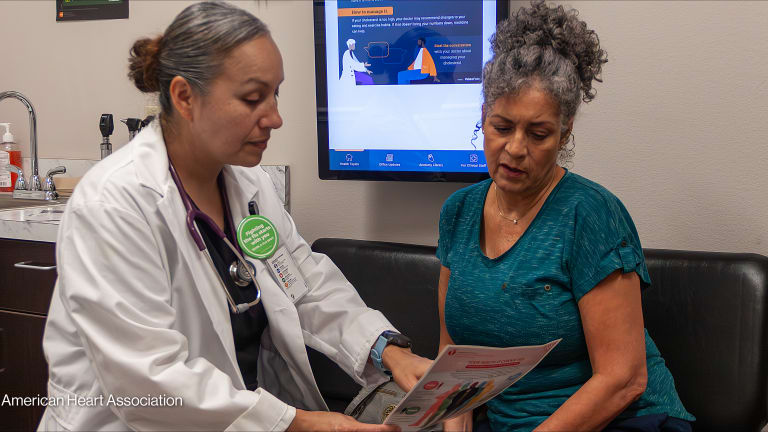
If we want to achieve universal health coverage under the Sustainable Development Goals by 2030, we need to strike a balance between global health priorities and commercial and economic interests.
How? By proactively engaging global financial players.
The economics and dynamics of health have changed significantly in the 21st century. The increase in noncommunicable diseases is responsible for much of this change. As NCDs put heavy financial burdens on countries, governments are increasingly focusing their efforts on finding new funding mechanisms. Moreover, they are trying to address the commercial determinants of health, which can be understood as the strategies used by the private sector to promote products and choices detrimental to our health.
There is a tricky balance at play. Products sold and marketed by tobacco, food, and drink companies, such as cigarettes or processed foods, undoubtedly have a strong impact on individuals. Corporations’ globalized marketing and sourcing strategies influence people’s lifestyle choices and define the socioeconomic environment within which they make these choices. On the other hand, these companies are also responsible for economic prosperity in many countries, through the employment opportunities and wealth they generate. We need to be very sensitive to getting the balance right between these interests and ensuring that health and wealth reinforce, rather than undermine, one another.
More from Taking the Pulse:
► World off track for global target to increase physical activity
Global financial markets have a key role to play in improving the prospects for global health, as I stressed last year at the European Health Forum Gastein. The conference, with an overarching theme of “Health in All Politics,” called for the integration of public health concerns into policy discussions across government and the political spectrum.
Not only are new financing partnerships key to achieving UHC, investing in global health also offers significant return opportunities. Some predictions estimate that profits in the Chinese health care sector could rise from $22 billion in 2010 to $113 billion in 2020. And this growth is not driven by the usual suspects of pharmaceuticals and medical technology, on which foreign direct investments usually focus, but rather by hospitals and health providers.
Digitalization of the health care sector offers another significant investment opportunity. Investing in health for all can both reduce health care expenditure and generate substantial income.
Sustainable investment in health
Health care investment by financial players tends to be sustainable and impactful. Ties to organizations promoting lifestyle choices that increase the risk of NCDs have come under mounting scrutiny in recent times.
Earlier this year, the NCD Alliance called for an immediate end to the collaboration between the Global Fund to Fight AIDS, Tuberculosis and Malaria and Dutch brewing company Heineken. Tobacco Free Portfolios, whose CEO Bronwyn King will join me at Gastein this year, is an excellent example of sustainable investment in a good cause: Overcoming “the world’s number one cause of preventable death.”
Sustainable investment is increasingly important to investors, as they are calling on banks and asset managers to divest from companies and sectors that offer harmful products. Adding the health component to investment criteria and proactively factoring in the commercial determinants of health and its associated costs to societies will significantly reduce investment risks while promoting global health.
Already, financial players — banks, asset managers, investors, and insurance companies — shape global health by determining how people access health care. Even though this may raise suspicion at first, global financial markets are an insufficiently tapped resource on the road to health equity. There are numerous ways for financial actors to invest in global health, for instance by financing hospitals and diagnostic centers.
Investment in NCD prevention for a company’s own workforce also directly affects profitability and productivity. Furthermore, supporting and promoting healthy lifestyles can cut down workplace absences by over 50 percent, a study by the Centers for Disease Control and Prevention on obese men has found.
Regardless of what measures are taken to reduce the burden of NCDs, CEOs and corporate executives are responsible for implementing them in their business strategies. But ultimately, the ones accountable for promoting NCD-prevention measures are the owners of the business, the shareholders.
Lifting the burden
These are only a few ways in which sustainable investment in global health can be a game changer in the fight against NCDs. Sustainable investment can be a profitable investment opportunity, that promotes our well-being simultaneously. Divestment campaigns in tobacco over the last 40 years show the leverage of investment over industry-wide business practices and strategies.
Societal costs created by the tobacco industry are roughly five times larger than the benefits. Financial and health services both seek stability, trust, growth, and investments. It is time to lift the burden of NCDs by pushing responsible business and investment strategies, with a “health forum for investors” at the World Health Organization for example. Proposed by the Independent High-level Commission on NCDs, the forum would promote investments in healthier portfolios and introduce health impact measures of investments, encouraging financial actors to do their part in reducing the burden of NCDs.
I firmly believe global health should be an agenda item at all high-level political and financial fora, especially in light of the rising health care costs, the growing trend toward an economic market for health, and the “financialization” of global health.
I look forward to discussing sustainable investment in health and the role of global financial markets in addressing the commercial determinants of health and sustainable investment criteria this week in Austria’s Bad Hofgastein.
For more coverage of NCDs, visit the Taking the Pulse series here.










